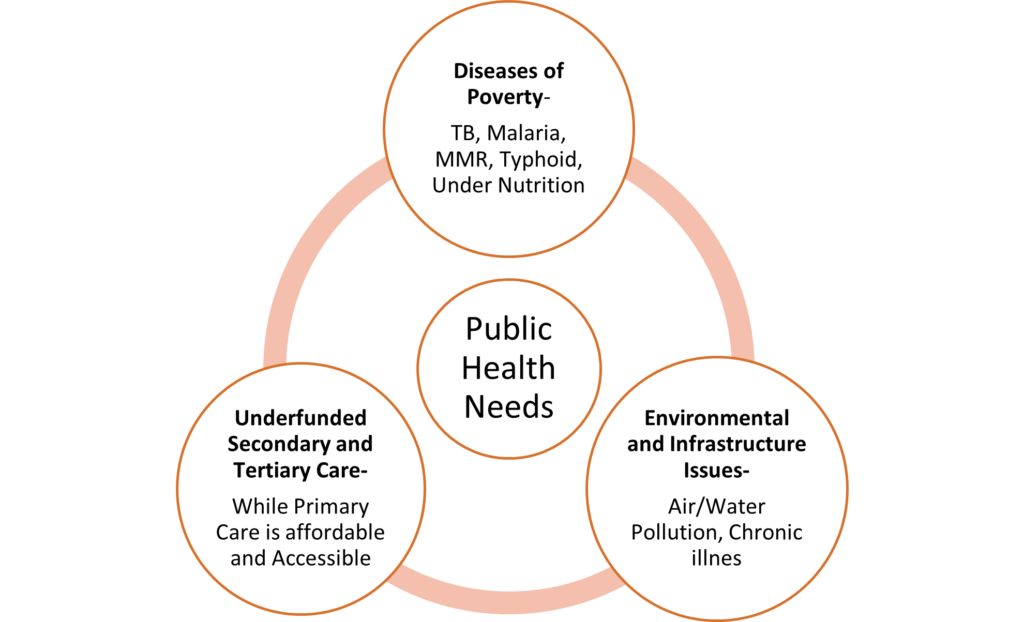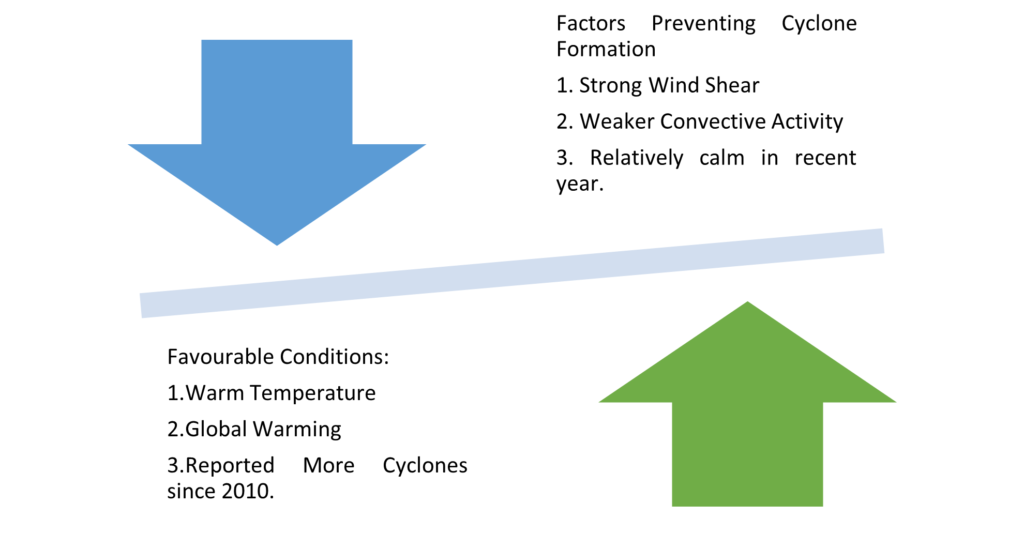(General Studies II – Health – Issues relating to the development and management of Social Sector/Services relating to Health, Education, and Human Resources)
- Public health policies are government decisions aimed at addressing the health needs of the population. These policies are based on available resources and prioritize both “felt needs” (those experienced by the people) and “projected needs” (those identified by experts).
- India’s public health policies have been criticized for not adequately addressing felt needs and prioritizing curative care over preventive care.
Public Health Needs –

Public Health Policies and Reforms –
- National Rural Health Mission (NRHM) 2005 and National Health Mission (NHM) 2013: They aimed to strengthen primary health care in the public sector. Under NHM, public sector health institutions like sub-centres, Primary Health Centers (PHCs), and Community Health Centers (CHCs) saw significant improvements.
- Ayushman Bharat and Pradhan Mantri Jan Arogya Yojana (PMJAY): Introduced in 2018, these schemes focus on providing tertiary care through public health insurance, outsourcing services to the private sector at market rates, leading to the privatization of secondary and tertiary care services.
- The Union Cabinet has approved a major expansion of the Ayushman Bharat Pradhan Mantri Jan Arogya Yojana (AB PM-JAY) to cover all senior citizens aged 70 years and above. This change allows anyone in this age group to be eligible for health insurance, regardless of their income level.
Challenges in the Public Health Sector –
- Underfunding of Secondary and Tertiary Care: Public secondary and tertiary health care remain weak due to inadequate infrastructure and staffing, despite improvements in primary care. E.g. Department of Health and Family Welfare’s FY 2024-25 budget is Rs 87,656.90 crores, not at 2.5% of GDP.
- Privatization and Insurance: The focus on Publicly Funded Health Insurance (PFHI) schemes like PMJAY benefits private hospitals more than the public health system. Only hospitalization expenses are covered under PMJAY, excluding primary and secondary care.
- Health and Wellness Centers (HWCs): HWCs aimed to provide comprehensive care but faced criticism for shifting the focus from outreach and preventive care to curative services without sufficient infrastructure.
- Overcrowded Public Facilities: The public sector’s infrastructure and staff shortages lead to overcrowding, further eroding trust.
- Renaming Health Institutions: In 2023, a directive renamed sub-centres, PHCs, and CHCs to ‘Ayushman Arogya Mandir’, several states raised concerns.
Way Forward –
- During the COVID-19 pandemic, the Public Distribution System (PDS) and National Rural Employment Guarantee Act (NREGA) worked alongside the health sector to provide essential services to the population.
- Strengthening Public Health Infrastructure: Prioritize the development of secondary and tertiary care within the public sector.
- Public-Private Collaboration: Ensure that public-private partnerships do not undermine public health care by regulating the private sector and holding it accountable for quality and affordable care.
- Increase Health Financing: The government must allocate more resources to the health sector to improve infrastructure, hire more health professionals, and reduce dependency on the private sector.
The public health sector plays a critical role in achieving several Sustainable Development Goals (SDGs), particularly SDG 3: Good Health and Well-being, and has direct and indirect connections with other SDGs such as SDG 1: No Poverty, SDG 2: Zero Hunger, and SDG 6: Clean Water and Sanitation. A balance between preventive and curative care, with increased government investment, is crucial for the sustainability of the public health system in India.



